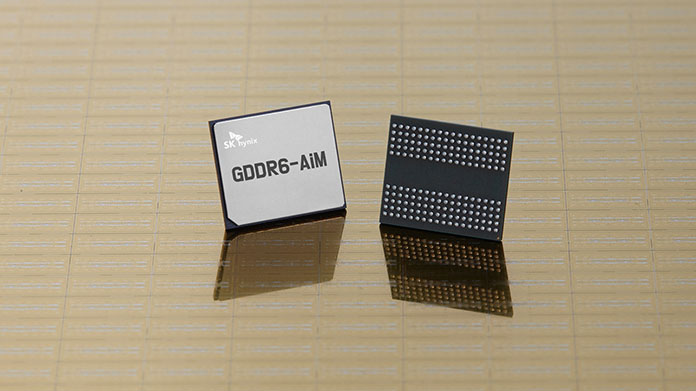SK hynix GDDR6-AiM to Accelerate AI by up to 16x
This is the firm's first application of PIM (Processing In Memory) which adds computational functions to semiconductor memory.
SK hynix has just gone public with an innovation which it dubs PIM (Processing In Memory). Its first application of PIM is called GDDR6-AiM (Accelerator in Memory) and is being readied for presentation and demonstration at the world's most prestigious semiconductor conference, the ISSCC 2022, in San Francisco, at the end of this month. According to SK hynix's preliminary testing, GDDR6-AiM can speed AI processing up to 16 times, and reduce power consumption by 80%.
Bottlenecks are a major problem in the world of computing and a solution gaining momentum is a technology known as in-memory computing. Systems applying this type of unified processor/memory architecture can process data faster than ever as they minimise the to-and-fro of data between discrete processor (whether that be CPU or GPU) and RAM components, and it also saves energy.
SK hynix has some interesting claims about its new GDDR6-AiM. The most impressive claims regard its performance. For example, the South Korean chip maker asserts that "A combination of GDDR6-AiM with CPU or GPU instead of a typical DRAM makes certain computation speed 16 times faster." This first PIM product is going to be targeting machine learning, high-performance computing, and big data computation and storage applications. One of the first applications earmarked to adopt GDDR6-AiM is AI processing acceleration, using chips developed in collaboration with SAPEON Inc, which recently spun off from SK Telecom (South Korea's national telco).
The potential benefits don't end with performance. Remarkably, SK hynix says that it has developed GDDR6-AiM which runs at 1.25V, lower than existing GDDR5 modules (1.35V). Thanks to this improvement, and the reduction of data movement between memory and the CPU or GPU, SK hynix says that power consumption savings up to 80% can be achieved.

After reading through the above news, one must naturally wonder whether SK hynix PIM technology will trickle down to consumer devices like PCs, laptops, tablets and smartphones. If the technology proves itself worthy in the high performance computing industry segments initially targeted, we don't see why it won't come to consumer devices eventually.
Of course, SK hynix isn't the only company working on in-memory computing technology. Local rival Samsung hit the headlines a month ago when its researchers revealed an in-memory computing device based on MRAM. The use of MRAM brings some interesting technical qualities to the table, primarily its non-volatile nature and the potential economies of large scale if/when it hits mass production.
Get Tom's Hardware's best news and in-depth reviews, straight to your inbox.

Mark Tyson is a news editor at Tom's Hardware. He enjoys covering the full breadth of PC tech; from business and semiconductor design to products approaching the edge of reason.